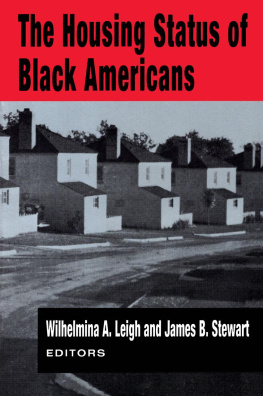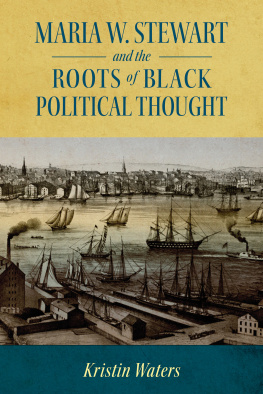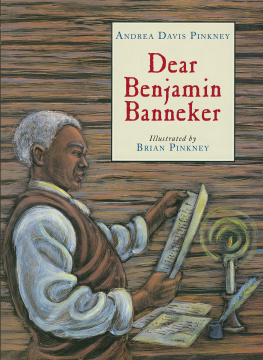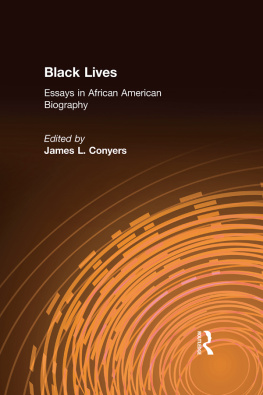THE HOUSING STATUS OF BLACK AMERICANS
THE HOUSING STATUS OF BLACK AMERICANS
Wilhelmina A. Leigh
James B. Stewart
First published 1992 by Transaction Publishers
Published 2021 by Routledge
605 Third Avenue, New York, NY 10017
2 Park Square, Milton Park, Abingdon, Oxon OX14 4RN
Routledge is an imprint of the Taylor & Francis Group, an informa business
Copyright 1992 by the National Economic Association and the Southern Center for Studies in Public Policy of Clark Atlanta University. Originally published in The Review of Black Political Economy, Winter/Spring 1991, Vol. 19, Nos, 34.
All rights reserved. No part of this book may be reprinted or reproduced or utilised in any form or by any electronic, mechanical, or other means, now known or hereafter invented, including photocopying and recording, or in any information storage or retrieval system, without permission in writing from the publishers.
Notice:
Product or corporate names may be trademarks or registered trademarks and are used only for identification and explanation without intent to infringe.
Library of Congress Catalog Number: 91-33116
Library of Congress Cataloging-in-Publication Data
The Housing status of Black Americans/[compiled by] Wilhelmina A. Leigh, James B. Stewart
p. cm.
Articles from a special issue of the Review of Black political economy.
Includes bibliographical references.
ISBN 1-56000-579-3
1. Afro-AmericansHousingUnited States. I. Leigh, Wilhelmina. II. Stewart, James B. (James Benjamin), 1947
HD7288.72.U5H67 1992
363.59996073dc20 | 91-33116 CIP |
Acknowledgment of Financial Support by the Federal National Mortgage Association (FNMA)
Financial support for the publication of the special issue of The Review of Black Political Economy on which this book is based was generously provided by Fannie Mae. The views reflected in these articles, however, should be attributed only to their authors. They do not necessarily reflect positions of Fannie Mae or its officers.
ISBN 13: 978-1-56000-579-7 (pbk)
CONTENTS
Wilhelmina A. Leigh
Veronica M. Reed
Wilhelmina A. Leigh
David Macpherson & James B. Stewart
Carla J. Robinson
Sheila Ards
Alfred D. Price
William M. Harris, Sr. & Nancy Olmsted
Robert D. Bullard
William E. Robertson
J. Eugene Grigsby III & Mary L. Hruby
Wilhelmina A. Leigh
This article explores the relationship between civil rights legislation and the housing status of black Americans. An economic and judicial history of the pursuit of fair housing (or equal opportunity in access to housing) is provided for two major periodsfrom the late 1800s to the 1950s, and from the years of the civil rights movement to the present. An exploration of the housing status of black Americans throughout these periods follows, in which measures such as crowdedness and tenureattributable partly to inequality in access to housingare examined, and comparisons of black and whites are made.
Equal opportunity in access to housing, or fair housing, as used in this article means the ability of households of any racial or ethnic group to seek out and acquire housing they can afford in any market area. That is, fair housing exists if all households of all racial groups have access to all neighborhoods, with income as the only limiting factor. Although the concept of equal opportunity in access to housing certainly encompasses residence in racially integrated neighborhoodsthat is, neighborhoods that both blacks and whites can move into and that both groups are continuing to move intoits use here is broader than integration alone. Equal opportunity in access to housing also could include residence in racially segregated neighborhoods (that is, neighborhoods in which only one racial group lives), if the decisions to so reside are not coerced.
This article first presents an economic and judicial history of the pursuit of fair housing by black Americans, from the late 1800s up to and including the decentralization of industry that began in the 1950s. Since the 1800s, major changes in the U.S. economic system have been accompanied by locational shifts in the population. Although black Americans, as all other Americans, have sought to take advantage of these economic changes by relocating, the lack of equality of opportunity in access to housingoften enforced by actions of the legislative or the judicial branch of governmenthas limited their ability to do so.
A legislative and judicial history of fair housing from the years of the civil rights movement up to the present is provided. A focal point of this history is the passage of the Civil Rights Act of 1968 (P.L. 90284) on April 11, 1968.1 Also noted are some of the major court decisions rendered in tests of the Act as they have contributed to the fair housing landscape since the passage of the 1968 Act.
Finally, the article explores the housing status of black Americans. Certain condition measures such as crowdedness and tenure that can be attributed in part to inequality in access to housing are examined. Comparisons of blacks with whites/all races are made. The final section synthesizes these discussions and draws conclusions.
ECONOMIC AND JUDICIAL HISTORY OF EQUAL OPPORTUNITY IN ACCESS TO HOUSING (LATE 1800s TO EARLY 1950s)
The period from the post-Civil War era up to the passage of the 1968 Fair Housing Act provides several examples of measures enacted to limit equality of access to housing for blacks. First, during the Reconstruction period, when the South in particular and the nation overall, were adjusting to the dismantling of the slave system and were establishing a new economic order, the doctrine of separate but equal was promulgated, with its associated constraints on access to housing by blacks. Second, while the northern states were industrializing, their localities used racially restrictive covenants and racial zoning to limit the access to housing of blacks seeking employment opportunities in the North. Third, the decentralization of industry that began in the middle of the twentieth century was accompanied by federal government housing policies that limited the ability of black Americans to suburbanize along with the industries that might employ them. (See Exhibit 1 for a summary of these trends.)
EXHIBIT 1
Economic History of Fair Housing
Period | Approximation to Fair Housing | Contemporary Political Economy |
|---|
After the Civil War | - Civil Rights Act of 1866 established same rights to purchase, sell, and hold property for black Americans as for white Americans.
- Plessy versus Ferguson (1896) established doctrine of separate but equal.
| - After the end of the economic system that depended on slavery, the nation began to industrialize; population began leaving the agricultural South.
- Legislative branch of federal government tried in vain to establish equality in housing and all other aspects of life for former slaves.
|
Industrialization | - Racially integrated neighborhoods dominated northern cities until World War II.
|














